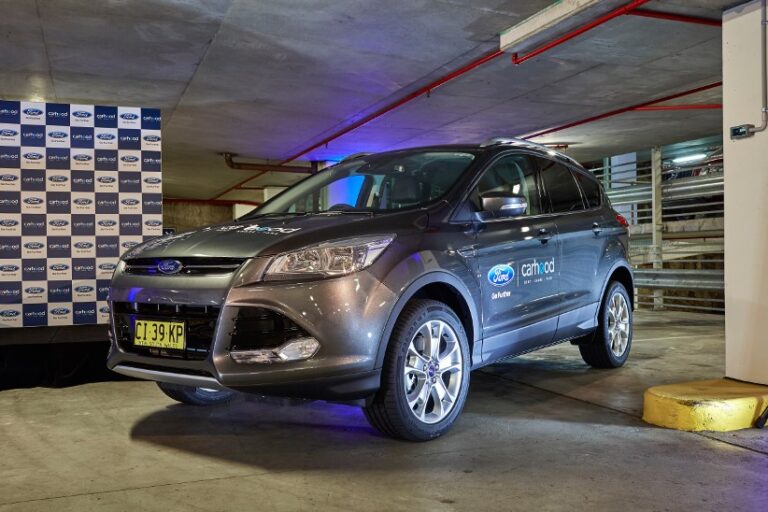The world is becoming more crowded and urbanised, air quality is a global issue, and customer preferences are changing rapidly. The Ford Smart Mobility plan was established early last year to use technology and innovation to address these trends and to make people’s lives better. Already, significant progress has been made, including:
- Connectivity: Ford is a leader in vehicle connectivity with the popular entertainment and communications system in the industry, Ford SYNC. This year, an all-new, more intuitive SYNC 3 system is being offered on some Ford and Lincoln vehicles. In addition, new SYNC Connect (available in Australia beginning spring 2016) gives owners the ability to remotely access vehicle features, including a remote start, unlocking doors, checking fuel level or locating a parked vehicle on a smartphone. Additionally, SYNC3 offers AppLink, which enables drivers to voice-control smartphone apps from the driver’s seat – allowing drivers to keep their eyes on the road and hands on the wheel.
- Mobility: For the past 14 months, Ford has conducted more than 30 global mobility experiments to gain insight into changing consumer transportation preferences. Several ongoing pilot programs are under way, including: GoPark, which builds a predictive parking system in London capable of directing drivers to streets where they are most likely to find a space; GoDrive, a car sharing program in London that provides vehicles with guaranteed parking at busy locations, such as London City Airport; and Dynamic Shuttle, a program at Ford’s Dearborn, Michigan, campus that allows employees and visitors to summon point-to-point rides on-demand.
- Autonomous Vehicles: Ford this year will have the largest test fleet of autonomous vehicles of any automaker – with vehicles on the road in California, Arizona and Michigan. Ford also is the first to test autonomous vehicles in the snow – a major step in the company’s plan to bring fully autonomous vehicles to millions of customers worldwide. At the same time, Ford is tripling its engineering investment in driver assist and semi-autonomous vehicle technology – such as adaptive cruise control, active park assist, lane-departure warning, lane-keeping aid, pedestrian detection, Pro Trailer Backup Assist and vehicle-to-vehicle connection technology – during the next five years.
- Consumer Experience: Ford this year is introducing FordPass in the U.S. – a free digital, physical and personal platform that offers four benefits for members: a Marketplace with mobility services, such as parking and sharing; FordGuides to help consumers move more efficiently; Appreciation for members to receive recognition for their loyalty; and FordHubs, where consumers can experience Ford’s latest innovations. The first hub opens later this year in New York City.
- Data and Analytics: To better anticipate customer wants and needs, Ford is increasing funding for data science and analytics research as the foundation of the Ford Smart Mobility plan. One example is Ford and IBM collaborating on a pilot platform that allows research scientists to look at tiny pieces of data – 10 or 15 seconds at a time – to spot patterns, correlations and trends, and write code to make more efficient transportation decisions to support the company’s Dynamic Shuttle employee shuttle service experiment at its Dearborn, Mich. headquarters in the U.S.






